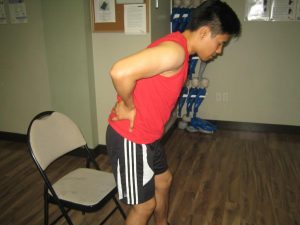Trochanteric bursitis involves inflammation of the bursa at the exterior point of the hip or greater trochanter. Once the bursa is inflamed or irritated, it results to hip pain. Remember that this is a usual cause of hip pain.
What are the indications?
It is important to note that trochanteric bursitis generally causes the following symptoms:

- Pain on the exterior of the hip and thigh or in the buttock
- Discomfort when lying on the affected side
- Pain when moving up the stairs
- Discomfort that worsens during certain activities including moving up from a deep chair or getting out of a vehicle
- Pain if the exterior of the hip is pressed
What are the causes?
Trochanteric bursitis can occur from any of the following:
- Injury to the point of the hip – this might include falling onto the hip, lying on one side of the body for extended periods or bumping the hip into an object
- Work or play that leads to overuse or damage to the joint region – this might include activities such as climbing, running upstairs or standing for long periods
- Poor posture – this can be caused by arthritis of the lumber spine, scoliosis and other spinal issues
- Previous surgery around the hip or placement of prosthetic implants in the hip
- Stress or strain on the soft tissues due to irregular or poorly aligned joint or bone
- Calcium deposits or spurs on the hip bone
Management of trochanteric bursitis
The objective of treatment for trochanteric bursitis is to lower the pain and inflammation, maintaining mobility and preventing disability and recurrence.
The treatment recommendations might include a combination of rest, application of cold or heat and splinting. In some cases, advanced treatment options might be used such as:
- Non-steroidal anti-inflammatory drugs (NSAIDs) such as naproxen or ibuprofen
- Physical therapy which includes range of motion exercises and splinting
- Corticosteroid injections given by the doctor to rapidly reduce the pain and inflammation
- Surgery might be the last resort if other treatments fail to work
